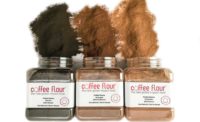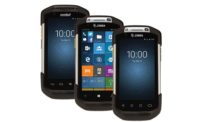As sales of private label products soar and the economy slides, Frozen Specialties finds itself in the right place and at the right time. Here’s how its versatile 150,000-sq.-ft. plant is helping the company meet the demand for its products.

As sales of private label products soar and the economy slides, Frozen Specialties finds itself in the right place and at the right time. Here’s how its versatile 150,000-sq.-ft. plant is helping the company meet today’s trends.
By Marina Mayer
Nestled in a tranquil town made up of old-fashioned diners and 1950s-style street lamps stands Frozen Specialties, Inc., a producer of private label pizzas and pizza bites.
Aside from the few pedestrians casually strolling up and down the brick-paved streets on a brisk March morning, there wasn’t much outdoor activity in Archbold, Ohio. It was as if time stood still, in more ways than one.
However, inside Frozen Specialties’ 150,000-sq.-ft. facility, it was anything but quiet. Behind the closed doors, nearly 190 employees hustled and bustled about the two-story plant to stay on schedule and to meet yet-another deadline for delivery of frozen pizza and pizza bites.
“We are pretty much a make-to-order company today,” says Ricardo “Ric” Alvarez, president and CEO of the company whose Holland, Ohio-based headquarters is about 45 minutes east of the plant. “We receive our packaging and many of our ingredients just in time, and we manufacture pretty much to the orders that we receive from our customers.”
As a private label manufacturer, this company needs to be just in time to stay abreast of and react to today’s constantly changing trends. In fact, the operation cranks out more than 450 SKUs [stock-keeping units] primarily for private label accounts, as well as for itsMr. P’s andFox de Luxebrands.
In the main production area on the first floor, flour for the pizza lines is stored in two steel bins that each hold more than 100,000 lb. of flour. For the pizza bites, flour is stored in two collapsible bins, which hold nearly 25,000 lb. each.
Overall, the plant has three pizza lines and a pizza bite production area.
Once the flour is mixed into dough for the pizzas, it is sheeted and cut into various sizes, from 5 in. in diameter to nearly 11 in., and shapes varying from traditional round to rectangular. The pizza lines even have the capabilities of producing non-traditional pizza crust shapes such as Mickey Mouse when working with Walt Disney products.
The pizza dough pieces enter an impingement oven with six baking chambers. They bake for less than two minutes at 400°F to 600°F. Afterward, the crusts are conveyed to one of three pizza topping lines, where pizza sauce is applied using waterfall technology or when the sauce flows at a pre-determined rate from a stainless drum down to a moving conveyor of pizza crusts.
Various blocks of cheese, including real Mozzarella, real Cheddar and Monterey Jack, travel through an automatic shredder before being sprinkled on top of the sauce. Other toppings, such as real pepperoni or ham, also are applied at this time.
Then the topped pizzas enter one of the three pizza spiral freezers and conveyed at -20°F for about 22 minutes. They later travel to the automated packaging area.
While in the packaging department, pizzas are photographed, wrapped in film, pass through metal detectors and are photographed again. All of this is just a few of the materials and machines used to ensure that Frozen Specialties meets quality for each pie.
The pizza bites travel through a somewhat different manufacturing path.
Once the flour is mixed into the dough, the bites enter an extruder and then filled with various pizza-flavored fillings such as cheese, meat or combinations of both. They then are shaped and cut into pillow-like pieces.
After the filling process, the bites are conveyed into an oil fryer maintained at 400°F to 410°F for about 30 seconds. They then enter a spiral freezer set at -20°F for the next 36 minutes.
Afterward, the pizza bites enter one of two packaging lines where they are either sealed in various size bags or weighed out into individual cartons ranging from 10- to 20-oz. portions.
After packaging and casepacking, both pizzas and pizza bites are taken to the facility’s 55,000-sq.-ft. holding freezer, which is maintained at -10ºF and holds up to 320,000 cases or 4,800 pallet positions of product.
Implementation of Strategy
Frozen Specialties maintains just-in-time agreements with several of its packaging and ingredient manufacturers that involve a rigorous supplier approval process, Alvarez says.To monitor quality and value, the company requires pre-sample verifications, continuous testing and measuring, certificates of analysis and an ongoing quality tracking of shipments.
“It’s all about uniformity,” Alvarez notes. “That’s why we measure, measure, measure. Our customers entrust us with their products.”
All ingredient shipments and inventory records are organized by a radio frequency identification (RFID) bar coding system that monitors ingredient shipment and final product inventory in real-time format.
For instance, every box has its own license plate, or label, which includes information like the SKU number, where it came from, where it’s going, pallet number, measurement size, and other information.
A majority of the orders are received electronically and stored in a real-time order-taking database that can be accessed by all six quality control blocks stationed at the end of each line. There, supervisors monitor the weight, size and other variables on the statistically measured graphs.
All information from ingredient handling to final product inventory is linked for quality control reasons, says Brian Replogle, senior director of operations.
“Everything in this facility is intertwined and put into our IT system, and the information and the data are available to all departments and evaluated daily to make sure that we stay as efficient as we say we are,” he says. “That’s one of our top priorities.”
Because it’s a private label manufacturer, many of its customers bring in their own auditing teams.
However, the facility recently received a superior rating through American Institute of Baking and underwent an intensive four-week U.S. Department of Agriculture food safety evaluation. Additionally, the operation is in the approval process for the new Global Food Safety Initiative. The company expects that process to be completed by the end of the year.
Frozen Specialties also invested in sustainability initiatives by shrinking the carton of its core 12-pack pizza product by 7%, which increased the number of personal pizzas to be casepacked to 16 from 12.
“The end result is that we could put twice as many pies on a pallet than we were able to in the past, which meant we could put twice as many pies on a truck than we were able to do in the past,” says Patrick Koralewski, director of marketing. “It took a lot out of the supply chain in terms of corrugated, in terms of pallets and in terms of trucks itself. So that was a huge initiative.”
In more ways than one, it’s important to be on time when meeting deadlines for delivery, but for Frozen Specialties, it’s more crucial that the operation remains just in time to produce its products as efficiently as possible.
Editor’s Note: For more about advances in pizza technology, check out our online archives at
www.snackandbakery.com.






